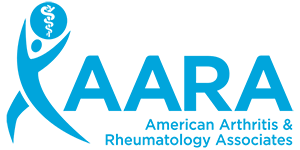Non-Radiographic Axial Spondyloarthritis
What is Non-Radiographic Axial Spondyloarthitis?
Non-Radiographic Axial Spondyloarthritis (nr-axSpA) is a form inflammatory arthritis that primarily affects the spine and sacroiliac joints but does not show visible joint damage on standard X-rays. It is a chronic condition and is part of the broader spondyloarthritis spectrum. With nr-axSpA, pain and stiffness are present due to joint inflammation, typically in the lower back and hips. Traditional imaging may not detect the damage, which these changes to the joints may only be discovered through an MRI or lab tests. Non-Radiographic Axial Spondyloarthritis often begins in young adults, affecting both men and women.
What are the Symptoms of Non-Radiographic Axial Spondyloarthritis?
While Non-Radiographic Axial Spondyloarthritis shares many symptoms with general back pain, features like inflammatory back pain, alternating buttock pain, uveitis, enthesitis, along with onset beginning at a younger age (typically before age 45), may raise suspicion. Early detection of nr-axSpA signs may prevent years of misdiagnosis and delayed treatment.
Common symptoms include:
- Lower back pain - chronic discomfort or pain especially in the morning or after periods of inactivity or resting
- Morning stiffness - may improve with movement, but also may awake during the night with pain
- Fatigue - a state of extreme tiredness, lack of energy, and difficulty performing daily tasks
- Alternating buttock pain - mainly where the pain shifts from one side of the buttock to the other
- Pain that improves with exercise but not rest
- Enthesitis - in some cases, inflammation at tendon or ligament attachments
- Uveitis - in some cases, eye inflammation
- Inflammatory Bowel Disease (IBD) - in some cases, a chronic, lifelong condition that causes inflammation in the digestive tract
- Psoriasis - in some cases, a chronic, inflammatory skin condition that causes skin cells to multiply too quickly, leading to the buildup of cells and the formation of thick, scaly patches
What are the Treatment Options for Non-Radiographic Axial Spondyloarthritis?
When treating Non-Radiographic Axial Spondyloarthritis, doctors typically focus on symptoms management and improving quality of life, as currently there is not a known cure. Treatment options for nr-asSpA may include:
- NSAIDs - nonsteroidal anti-inflammatory drugs, like ibuprofen and naproxen, can help with pain and inflammation in the joints
- Biologic therapies – TNF inhibitors, il-17 blockers and targeted synthetic DMARDs can be effective in treatment plans (administered via IV, pills or self-administered shots).
- DMARDs - disease-modifying antirheumatic drugs may be considered in some cases.
- Physical Therapy – offers exercises and stretching can help maintain joint function and reduce stiffness.
- Corticosteroids injections – to assist in managing and reducing inflammation during localized flare-ups.
- Lifestyle Adjustments - modifying diet to one that promotes anti-inflammation, managing stress, and quitting smoking are highly recommended.
Living with a Non-Radiographic Axial Spondyloarthritis Diagnosis
Treatments and disease management vary from patient-to-patient depending upon the severity of nr-axSpA. Experience dictates that managing the symptoms of this disease may assist in improving quality of life.
Patient Care is our Priority
There is no known cure for Non-Radiographic Axial Spondyloarthritis, but it is very treatable. nr-axSpA can often be managed with treatments to reduce inflammation, alleviate symptoms, and improve overall function. Routine visits with your healthcare provider and adherence to your treatment plan may be crucial for achieving the best possible outcomes and improving your quality of life. There are many treatment plans available. Dr. Carter and staff can help determine the right plan for you. We understand that living with this disease is not easy. Dr. Carter, along with the staff at Recovery Rheum, are here to help you every step of the way.







